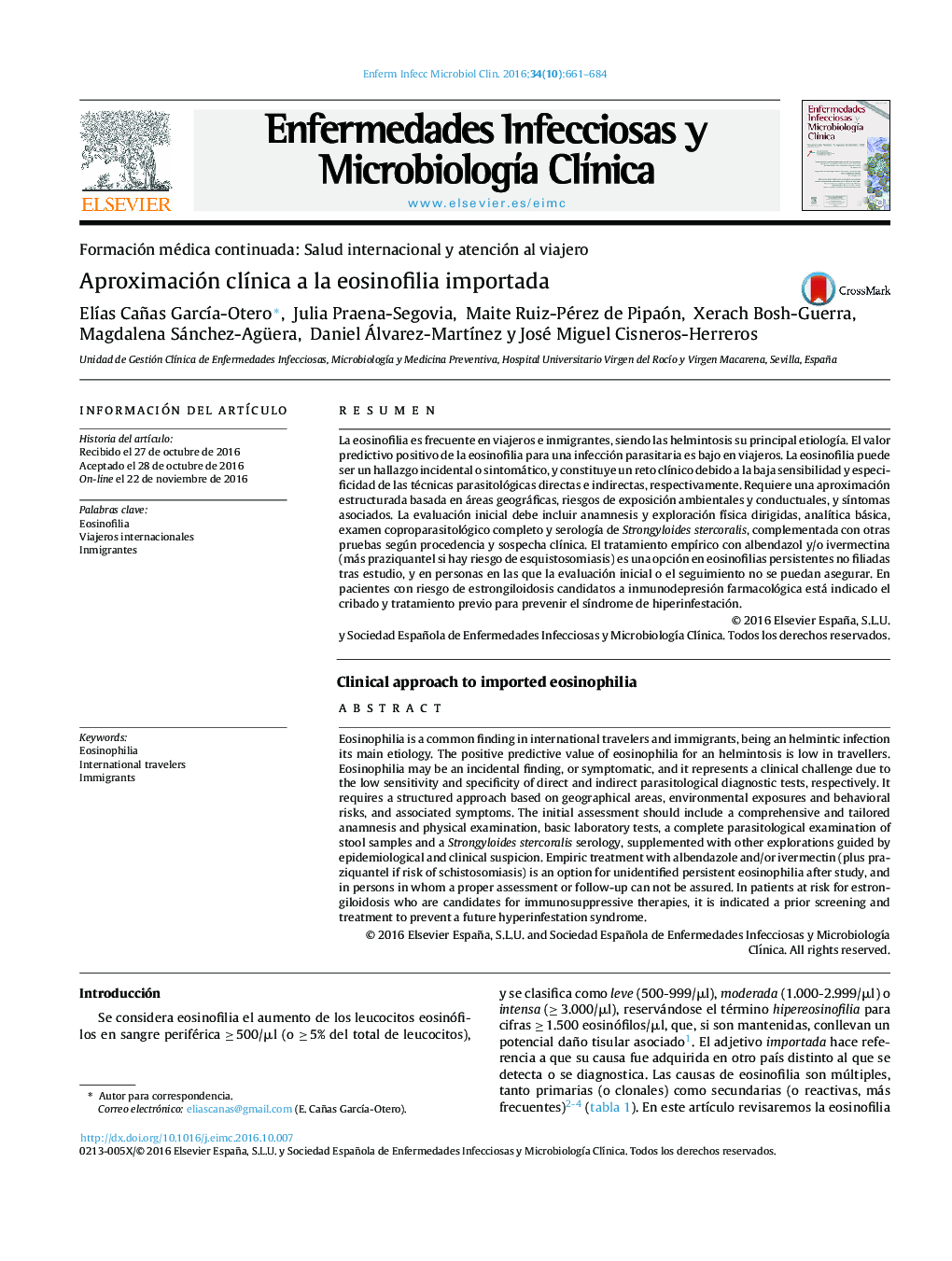| Article ID | Journal | Published Year | Pages | File Type |
|---|---|---|---|---|
| 5672116 | Enfermedades Infecciosas y Microbiología Clínica | 2016 | 24 Pages |
Abstract
Eosinophilia is a common finding in international travelers and immigrants, being an helmintic infection its main etiology. The positive predictive value of eosinophilia for an helmintosis is low in travellers. Eosinophilia may be an incidental finding, or symptomatic, and it represents a clinical challenge due to the low sensitivity and specificity of direct and indirect parasitological diagnostic tests, respectively. It requires a structured approach based on geographical areas, environmental exposures and behavioral risks, and associated symptoms. The initial assessment should include a comprehensive and tailored anamnesis and physical examination, basic laboratory tests, a complete parasitological examination of stool samples and a Strongyloides stercoralis serology, supplemented with other explorations guided by epidemiological and clinical suspicion. Empiric treatment with albendazole and/or ivermectin (plus praziquantel if risk of schistosomiasis) is an option for unidentified persistent eosinophilia after study, and in persons in whom a proper assessment or follow-up can not be assured. In patients at risk for estrongiloidosis who are candidates for immunosuppressive therapies, it is indicated a prior screening and treatment to prevent a future hyperinfestation syndrome.
Related Topics
Life Sciences
Immunology and Microbiology
Microbiology
Authors
ElÃas Cañas GarcÃa-Otero, Julia Praena-Segovia, Maite Ruiz-Pérez de Pipaón, Xerach Bosh-Guerra, Magdalena Sánchez-Agüera, Daniel Álvarez-MartÃnez, José Miguel Cisneros-Herreros,
